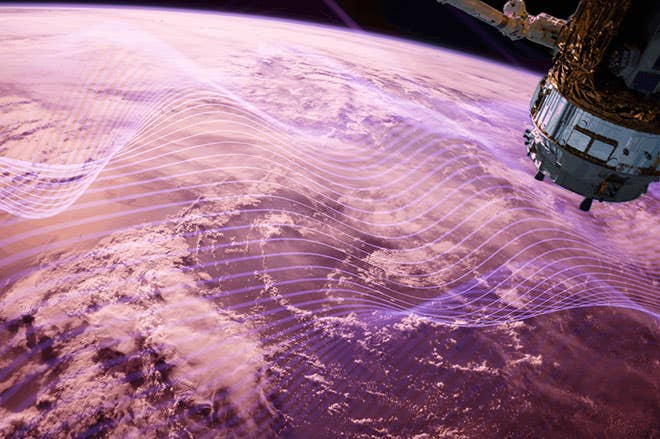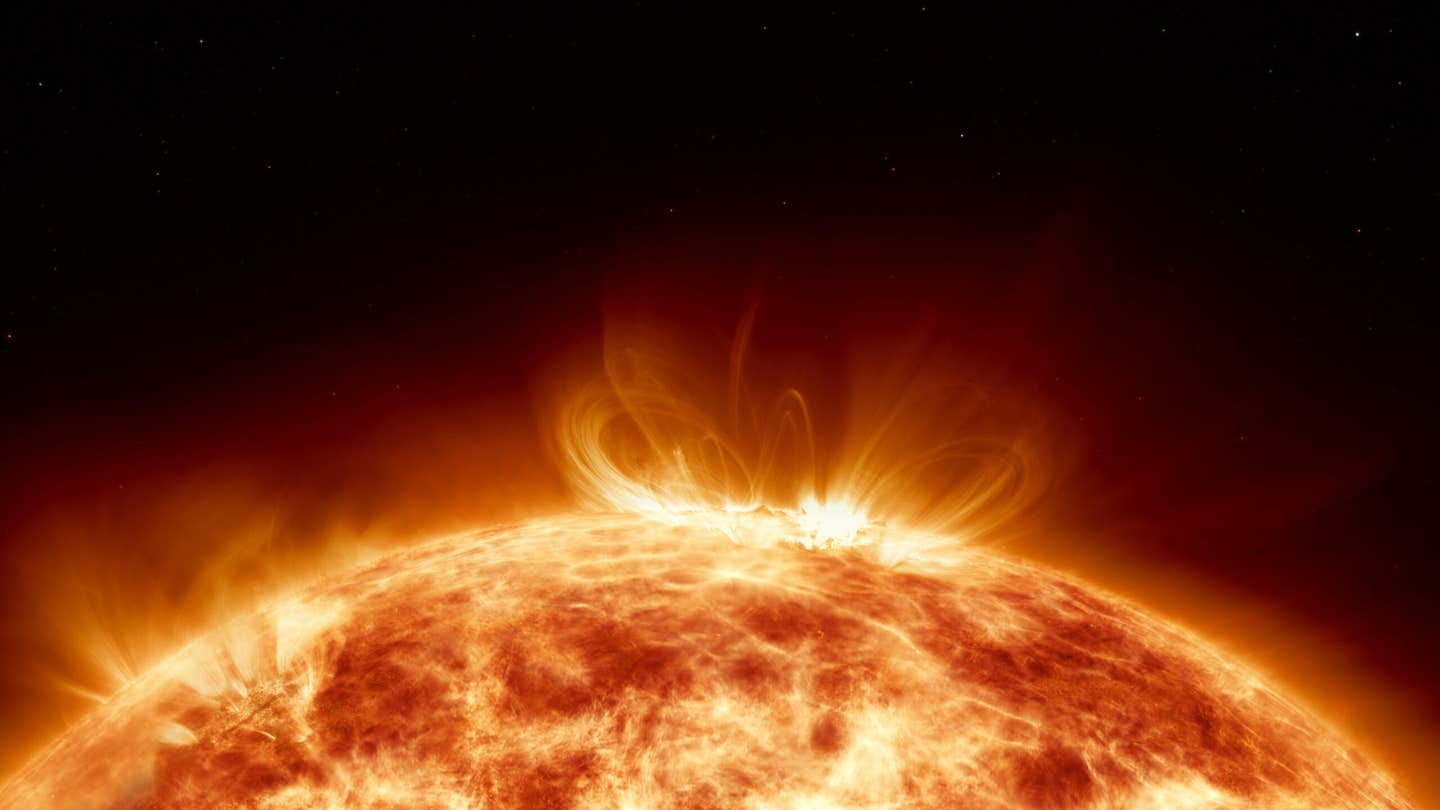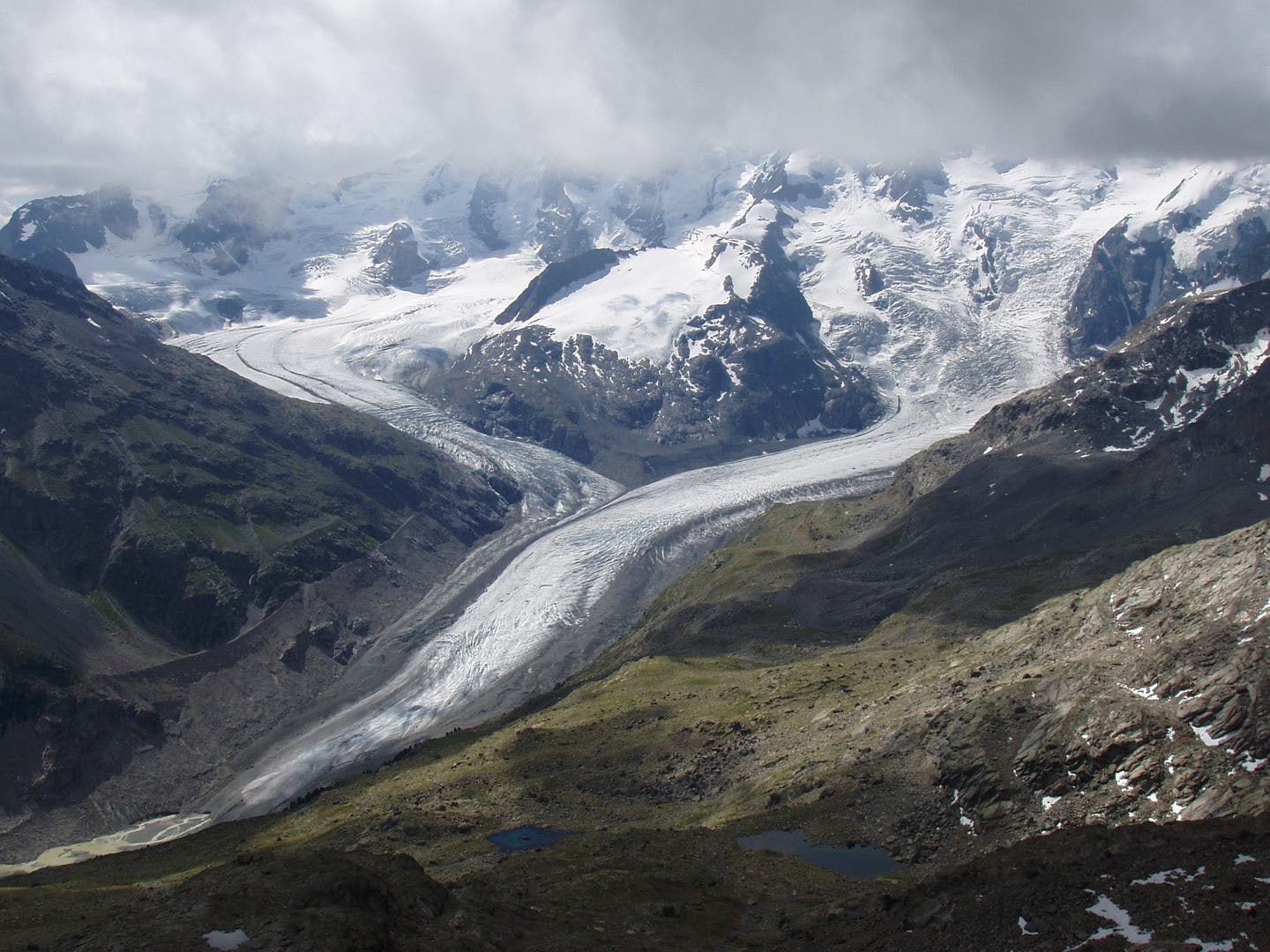Rising CO2 levels threaten to disrupt global space communication
Scientists warn that rising CO2 may intensify ionospheric layers, disrupting radio and satellite communication.

 Edited By: Joseph Shavit
Edited By: Joseph Shavit

Radio waves in the ionosphere. Photo of the Earth with radio waves, depicted in purple, flowing across it. HF and VHF waves travel through the ionosphere. (CREDIT: Huixin Liu/Kyushu University)
Far above your head, in the atmosphere between Earth and outer space, an invisible process is occurring. The increasing concentration of carbon dioxide is already manifesting itself in impacts beyond heat waves, melting ice, and rising seas. It is quietly altering the sky itself, even in places where the air can never be breathed because it is so thin.
A new study published in Geophysical Research Letters, in which researchers from Kyushu University and Japan's National Institute of Information and Communications Technology modeled how increasing CO₂ alters the ionosphere (the region of charged particles that supports long-distance radio communication), revealed a surprising new dimension of climate change that most people never consider.
The Hidden Mirror in the Sky
The E region of the ionosphere lies roughly 60 miles above the surface of the Earth, an ocean of ions made from iron, magnesium, and calcium atoms that shimmer in the atmosphere below. This thin layer of metallic ions can coalesce under just the right conditions into a paper-thin band called the sporadic-E layer, or Es. Although it is only a few miles thick, it can extend for hundreds of miles in the horizontal direction of the layer. As a result, the Es layer acts like a natural mirror that reflects radio waves back to the surface of the Earth.
The Es layer of the ionosphere allows pilots, ship crews, and other emergency workers to communicate messages well over the horizon. Although the Es layer can apply these benefits of reflected signals, it can also bend and/or block the signals from navigation systems and voices, resulting in poor-quality signal reception.
Since the Es layer is not constant, the layer may appear all of a sudden, remain for an hour, and then dissipate without notice. Professor Huixin Liu, from the Faculty of Science at Kyushu University, has focused on how this invisible layer is formed over the years. "Es are sporadic, as the name indicates, and are unpredictable," Liu says. "But when they occur, they can disrupt HF and VHF radio communications."
According to her most recent simulations, as the world heats, these disruptions could occur more frequently.
Simulating the Atmosphere of the Future
Using a whole-atmosphere model called GAIA, Liu and her team recreated what happens when carbon dioxide doubles from pre-industrial levels of 315 parts per million to 667 ppm, a concentration scientists project by 2100. For context, the global average in 2024 was approximately 423 ppm.
The team conducted their simulations during summer, when Es layers are most dynamic, and examined how metallic ions converge vertically, or vertical ion convergence or VIC. The more VIC, the thicker and longer-lasting the layer.
According to their results, when CO₂ doubles, VIC increases globally at altitudes between 100 and 120 kilometers. The metallic "hotspots," where ions cluster, were found to shift downward by around five kilometers, meaning they were likely to form closer to the surface of the atmosphere. It also became thicker and lasted longer, especially overnight.
Why More Carbon Means a Cooler Sky
While it may seem odd that increased CO₂ cools the upper atmosphere while the surface is heated, that is how the science works. Closer to Earth, carbon dioxide traps heat. At greater altitude, it radiates that heat away into space, cooling the very thin air above 60 miles. As the thermosphere cools, density decreases, and there are fewer collisions between the ions and neutral particles, Liu says.
"With fewer collisions, metallic ions move more freely,” Liu says. “That enables them to build up into stronger and denser layers."
At the same time, the changing temperature pattern changes the pattern of the daily high-altitude winds that move east and west. The tidal winds are similar to invisible combs, sweeping metallic ions into bands. With more CO₂, those winds change and drive the ions into new zones of convergence. All these changes enhance and sustain a stronger and deeper Es layer.
Testing Patterns from the Model Around the World
To test their findings, the team modeled simulations for two locations: Kokubujin, Japan, and Arecibo in the Puerto Rico area, which are at different geomagnetic longitudes. Both showed the same general trend. In Japan, Es activity that used to peak during the day began to persist into the night when under enormous amounts of CO₂. In Puerto Rico, the layers got denser and appeared at lower altitudes.
Around the globe, both regions showed that if emissions follow the same trajectory, the Es phenomenon will continue to enhance in strength in other parts of the world.
The Ripple Effect of Climate Change
You may not see them personally, but pilots, radio operators, and space agencies almost certainly will. Layers of sporadic-E may deform radio waves in unpredictable manners, which can interfere with high-frequency signals utilized in aviation, military radar, and maritime communication.
"This cooling does not necessarily mean all is good," Liu cautioned. "It shrinks the air density in the ionosphere and strengthens the wind circulation. This can also change the orbit and lifetime of satellites and space debris and disrupt radio communications from localized small-scale plasma irregularities."
For everyday individuals, this is another reminder that climate change doesn't stop at the ground. It is even affecting the uppermost layers of the atmosphere—places you will never see—as a direct result of the carbon we are releasing.
A Delicate Balance in the Ionosphere
The physics concerning the Es layer is complicated, but beautiful. The metallic ions swirl along Earth's magnetic field lines in an invisible dance of electric and wind forces. With the air getting thinner, the collisions of ions with neutral particles decrease, allowing the ions to respond more strongly to magnetic and wind forces.
In the GAIA simulations, this effect led to a distinct transition of the boundary of slow to fast movement in the system and intensified the vertical convergence of ions that generates the sporadic E layer. Think of it like cream swirling into coffee—as the viscosity changes, the pattern morphs into various unexpected swirls.
What Lies Ahead
Researchers intend to further refine their model by combining GAIA simulations and real satellite and radar data. Future work will address local chemistries and gravity waves and their influence on metallic layers in the ionosphere. They hope to improve forecasting capabilities for sporadic E events, which could have serious implications for the aviation and telecommunications industries.
For Liu, the work has bigger implications. "Global warming not only affects the ground but goes well into space," she said. Her words encompass an uneasy reality: the climate narrative does not end where the air thins out. It continues upward, into a fragile boundary where our technology comes into the atmosphere.
Practical Implications of the Research
Understanding how carbon dioxide affects the ionosphere might help to protect our communication systems that depend on radio waves. Future air traffic control communications, maritime network communications, and emergency broadcast systems may be designed differently because of a stronger and lower sporadic E layer.
The study also tells us how satellite orbits and the lifetime of space debris may change with the cooling of the thermosphere.
As the world grows more and more dependent on satellite and radio infrastructure, these findings may help engineers design more resilient engineering systems to ensure that as the atmosphere changes, the connections that underpin modern life remain intact and strong.
Research findings are available online in the journal Geophysical Research Letters.
Related Stories
- Climate Change Is Making Space More Hazardous for Satellites
- First-ever laser-beamed message received from 10 million miles away
- Space-based laser communications system will transform future science missions
Like these kind of feel good stories? Get The Brighter Side of News' newsletter.
Joshua Shavit
Science & Technology Writer and Editor
Joshua Shavit is a Los Angeles-based science and technology writer with a passion for exploring the breakthroughs shaping the future. As a co-founder of The Brighter Side of News, he focuses on positive and transformative advancements in AI, technology, physics, engineering, robotics and space science. Joshua is currently working towards a Bachelor of Science in Business and Industrial Engineering at the University of California, Berkeley. He combines his academic background with a talent for storytelling, making complex scientific discoveries engaging and accessible. His work highlights the innovators behind the ideas, bringing readers closer to the people driving progress.



